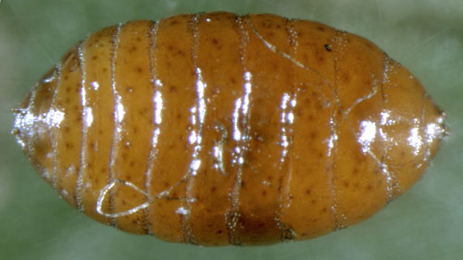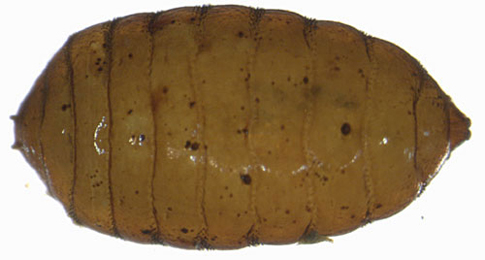|
||||||
|
PARIETARIA. Pellitory-of-the-wall. [Urticaceae] |
|
Two species of Parietaria are recorded in Britain. These include the native Pellitory-of-the-wall (P. judaica). The BSBI provide a downloadable plant crib for Parietaria. Four British miners are recorded on Parietaria. A key to the European miners recorded on Parietaria is provided in Bladmineerders van Europa. |
Key for the identification of the known mines of British |
| 1a > Leaf-miner: Larva
forming linear-blotch mine between two veins, not adjoining margin
of leaf, frass in distinct black strips or pellets (Spencer, 1972b: 37 (fig. 111), 39; Spencer,
1976: 100 (fig. 146)).
Full depth mine with indistinct primary and secondary feeding lines. Generally the mines lie in the centre of the leaf. The mine starts as a narrow corridor, strongly, 'intestine-like', wound (unless the mine lies near the leaf margin, in which case the first part of the corridor follows the leaf margin). Further on the corridor widens into an elongated blotch. Part of the frass in a long fine thread. In comparision with the other two Agromyza's on Nettle the mine is much clearer, less green-cloudy. Pupation outside the mine. The mine starts away from the leaf edge usually and has a coiled intestine-like start; it has frass in long threads in the broader part of the mine. |
 Agromyza anthracina puparium Image: © Willem Ellis (Bladmineerders van Europa) |
|
Agromyza anthracina Meigen, 1830 [Diptera: Agromyzidae]. |
1b > Leaf-miner: Larva forming linear-blotch, adjoining or following the margin of the leaf. |
2a > Leaf-miner: Larva forming an irregular elongate linear blotch mine, normally adjoining margin of leaf (Spencer, 1976: 137). Forms a long blotch mine, which is usually adjacent to the edge of the leaf, which turns black. Full depth corridor, mostly beginning at the leaf margin, and never starting with a closely set, intestine-like, number of curves. Further on the corridor considerably widens, mostly keeping close to the leaf margin. Often several larvae in a mine. Frass in lumps or short rods, never in long threads. Pupation outside the mine. Puparium reddish brown |
 Agromyza pseudoreptans puparium Image: © Willem Ellis (Bladmineerders van Europa) |
|
Agromyza pseudoreptans Nowakowski, 1964 [Diptera: Agromyzidae]. |
| 2b > Leaf-miner: Mine
generally follows the leaf margin, widening from the initial linear
section into an irregular broad blotch; it is dark green when fresh
but quickly turns blackish (Spencer, 1972b: 34 (fig. 90); Spencer,
1976: 138-9, fig. 246).
Full depth corridor that mostly starts near the leaf margin, and never begins with a series in close, intestine-like curves. Further on the corridor strongly widens, and usually remains close to the leaf margin. Often several larvae in a mine. Frass in lumps or short rods, never in long threads. Puparium reddish brown |
|
| Agromyza reptans Fallén, 1823 [Diptera: Agromyzidae]. |
2c > Leaf-miner: The mine usually starts in the lower part of the leaf and then broadens out towards the tip. The mine appears whitish on plants growing in the shade (and are very obvious as pale patches on usually the larger leaved examples of the plant), but more grey or brown in brighter habitats. The mine is lined with silk strands. The mine begins as a short irregular corridor, usually following the midrib, widening into an irregular blotch. Some silk is deposited in the mine, causing it to contract a bit. Most frass is ejected through an opening near the begin of the mine; some is trapped in spinning under the leaf. The larva often moves to a new mine. Pupation within the mine in a folded leaf margin or in a leaf fold. |
|
Cosmopterix pulchrimella Chambers, 1875 [Lepidoptera: Cosmopterigidae]. |
| Last updated 06-Jul-2019 Brian Pitkin | ||
